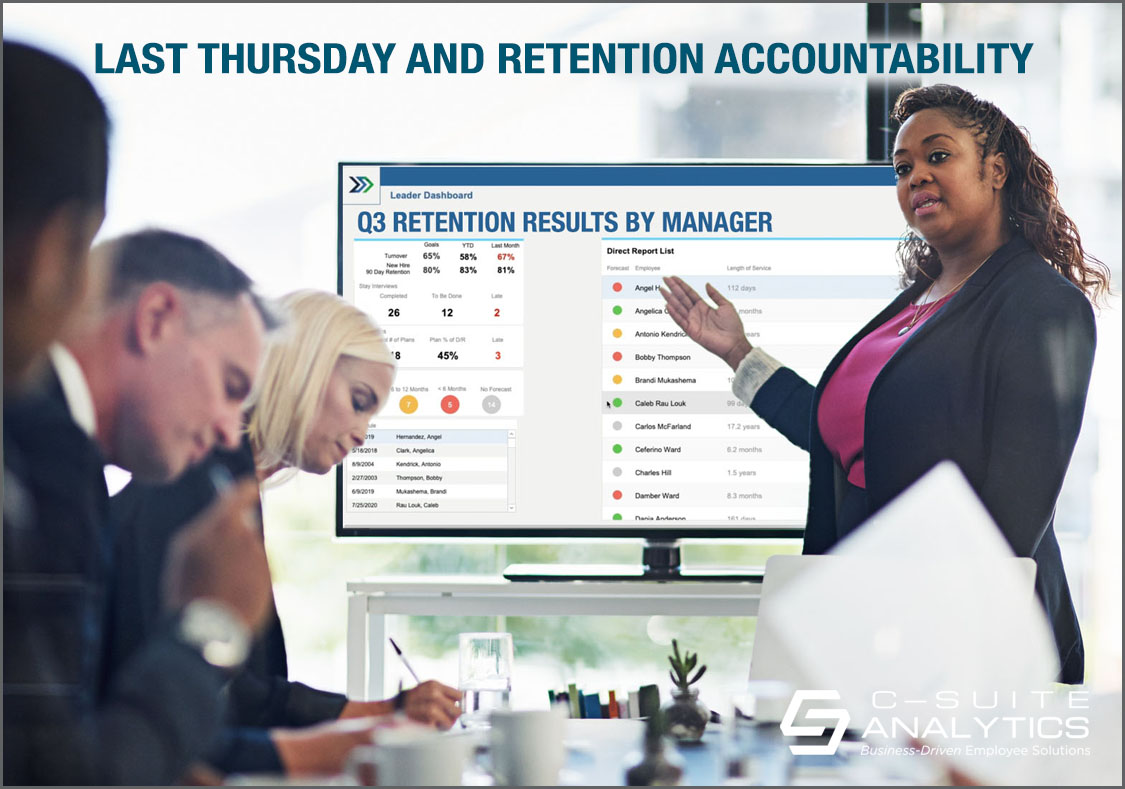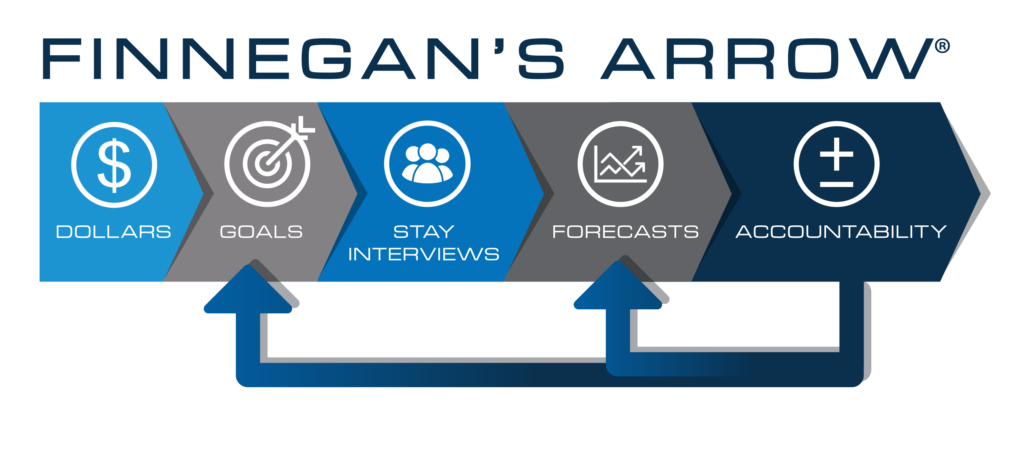Most hiring tools answer whether candidates can and will do the job, but not if they’ll stay. Learn how realistic job previews and motivational-fit interviews can improve retention from day one.
Last Thursday and Retention Accountabilities

Two things happened last Thursday that will juice anyone’s interest in cutting employee turnover…and both happened in Toledo, Ohio where I was keynoting THRAC 2022, the annual local SHRM conference for the Northeast Ohio HR Association.
Retention Accountability Needs Support
The first was that after my session the audience made clear that they totally bought in on our comprehensive retention solution but were skeptical they could convince their executives to support real retention accountability. The second was a phone call earlier in the day with a major, multi-hospital client where we identified a new way to drive that same accountability.
Let’s start here with Finnegan’s Arrow, our comprehensive solution, with each component detailed below:

- Dollars: Place true dollar costs on turnover for key retention jobs.
- Goals: Establish specific improvement goals by leader for all turnover and new-hire turnover.
- Stay Interviews: Train leaders on all levels to conduct Stay Interviews by asking five highly-researched questions and developing four critical skills.
- Forecast: Train leaders on all levels to forecast how long each employee will stay
- Accountability: Drive leader accountability for retention goals so results are sustainable.
Retention Accountability Needs Executive Support
Components #2 and #5 make clear that turnover will not decrease and retention will not sustain unless executives drive true retention accountability…and accept the switch that retention accountability move from HR to operations where it has always belonged. It is easy, then, to imagine a group of HR professionals from variously-sized companies wishing for help to convince their executives. The solution for them was easy as I volunteered to schedule a one-hour call with all of their c-suite members to convince them the following:
- The number one reason employees quit jobs is because they don’t trust their boss.
- This does not mean every employee who quits didn’t trust her boss, though that might be true.
- But it does mean that leaders on every level become our very best retention solution as opposed to pay, benefits, or any other thing.
- Those leaders, then, need skill development to conduct Stay Interviews with each employee…and then forecast how long each employee will stay.
- And because leaders are the driving force for retention, executives must hold them accountable for it.
Retention Accountability Needs Tactical Support
The healthcare client’s solution was more precise, more tactical than strategic…and it developed from a lengthy discussion where we all participated in a new way to spark that accountability fire. My friend Tim, the CHRO there, will soon meet with the CEOs of each of their three hospitals and the planned discussion will include this exchange:
- What retention goals will you and your top team establish for 2023?
- Given the many strategic goals you are establishing for 2023, where will achieving your retention goal fit on your list? What number for priority will you give it?
- Which other goals will you place above it?
- What specific accountability methods do you have in place to hold your managers accountable for those goals that you place above retention?
- How can you replicate those accountability methods for retention?
So let’s do an example that applies to all organizations. If after consideration your CEO says retention slides in as goal priority #3, behind improving sales and cutting costs, then the resulting discussion would likely include questions like these:
- So how do you track sales and expenses?
- Who sees those reports?
- How frequently are those reports distributed?
- In what monthly, weekly, or daily meetings are they discussed?
- How often do managers discuss those report findings in one-on-one meetings with their supervisors?
Retention Accountability Won’t Happen Without Top Teams
The resulting major question then becomes…
“Which of all of these communication methods will you commit now to also include company and individual-leader performance against retention goals?”
The point is that retention accountability won’t happen without the identical rigor our top teams apply to the goals that are most important to them. Retention accountability is new for most top teams so we cannot expect them to drill it down to specific reports and meetings without our coachng them to do so.
You can be sure we will be asking this same group of questions to our client executive teams going forward. And I suggest all of you who are reading this do the same.
You Can Cut Turnover by 20% or More, Even During The Great Resignation
Schedule a conversation with me at DFinnegan@C-SuiteAnalytics.com to discuss your employee retention roadblocks and I’ll share ideas for how you can move forward and what is working for other companies to cut turnover by 20% and more, even during “The Great Resignation” that may benefit you.



